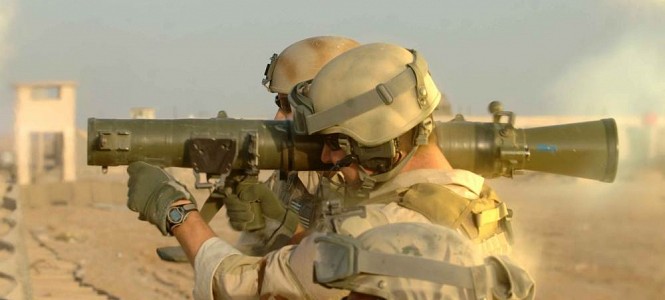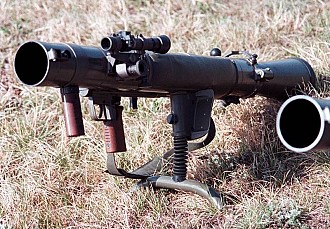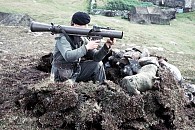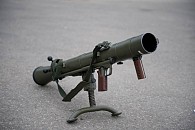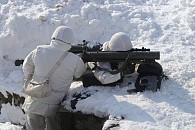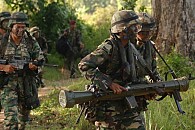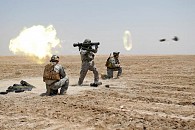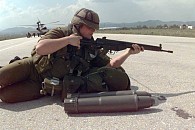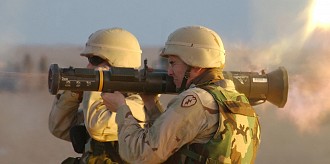Infantry weapons / Recoilless rifles / Carl Gustav
Carl Gustav
General Facts
- TYPE
Recoilless rifle - ORIGIN
 Sweden
Sweden - NICKNAMES
Military designations:
8.4 cm PAR 66/79 (Austria)
Dykn M/85 (Denmark)
PZF 84-A1 (Germany)
FT-84 (Japan)
Canhão sem Recuo 84mm M/994 (Portugal)
Granatgevär m/48 (Sweden)
L14A1 (UK)
Medium Anti-Armor Weapon System / MAAWS (USA)
Ranger Antitank Weapons System / RAWS (USA)
Nicknames:
Charlie Gusto (Australia)
Charlie Gutsache (Australia)
Charlie G (UK) - DESIGNED
1945 - 1946 - DESIGNER
Hugo Abramson and Harald Jentzen - PRODUCTION
1948 - 1960's (M1)
1964 - present (M2)
1991 - present (M3) - PRODUCERS
 Germany
Germany
 India - Ordnance Factory Board
India - Ordnance Factory Board
 Japan - Sumitomo
Japan - Sumitomo
 Sweden - FFV/Bofors
Sweden - FFV/Bofors - QUANTITY
Unknown - UNIT COST
Unknown - CHARACTERISTICS
 Powerful warheads
Powerful warheads
 Good range and accuracy
Good range and accuracy
 Rugged and reliable
Rugged and reliable
 Man portable
Man portable
 Large and heavy
Large and heavy
 Large backblast
Large backblast
Introduction
The Carl Gustav is a recoilless rifle of Swedish origin. It was developed in the mid 1940's and is a much more capable weapon system than those used during World War 2. The design proved to be a success. Due to subsequent upgrades and new ammunition the Carl Gustav remains a potent weapon system today.
Design
The Carl Gustav is a recoilless rifle. It consists of a metal launch tube with a hinged breech at the rear for reloading. The barrel is rifled with the rounds being spin during flight. The launch tube is fitted with pistol grip, forward grip and bipod. Normally it is fitted with an optical sight, with mechanical and night vision sights being available. The Carl Gustav can be operated by a single person, but two operators increase reloading speed and are able to share the load. The Carl Gustav is a man portable system, although it is very heavy.
Firepower
The Carl Gustav fires a variety of ammunition, including anti-tank, high explosive, smoke and illumination rounds. Over time the available ammunition has been vastly improved, keeping the weapon system up to date with latest demands. The effective range depends on ammunition and target. Stationary vehicles can be engaged out to 700 m, which is reduced to 300 to 400 m when moving. High explosive, smoke and illumination rounds can be used to over 1 km. When operated by two men the rate of fire is 6 rounds per minute.
Mobility
The Carl Gustav was designed to be a man portable weapon that could be carried as standard issue equipment. Although the weapon is quite heavy its excellent performance makes it worth the effort to take it along. Due to its weight at least 2 soldiers are needed to carry the weapon and associated ammunition. The latest M3 model is much lighter and much less of a burden upon the operator.
Users
The first user of the Carl Gustav was Sweden. It was quickly adopted by most European nations and later on by the USA and many nations around the world. During the Cold War it was the main infantry anti-tank system in use with NATO forces. Since the threat of armor has reduced many armies prefer much lighter disposable rocket launchers.
M2
The original version of the Carl Gustav launcher was the M1. The most common version is the improved M2 that was introduced in 1964. The M2 is the most common and remains in production today. The M2-550 features a large sight unit that replaces the original optics. The sight unit consists of a laser range finder and lead computing sight. Additionally the rocket assisted HEAT 551 round was introduced at the same time, which can also be fired from the original M2. This sight and ammunition combination makes the M2-550 more effective against moving targets at longer ranges, but also increases the weight of the system significantly. The M2-550 is no longer marketed as a separate model. The sight remains available for the M2.
- Specifications:
- Carl Gustav M2
- Carl Gustav M2-550
| Type | Recoilless rifle |
|---|---|
| Crew | 1 or 2 |
| Caliber | 84 mm |
| Length | 1.065 mm |
| Width | ? |
| Height | ? |
|---|---|
| Weight | 14.2 kg empty |
| Sights | Optical, 3x scope |
| Ammunition | Various warheads |
| Guidance | None, free flight |
| Velocity | 210 - 255 m/s at muzzle |
|---|---|
| Range | |
| Penetration | Depends on warhead, up to 425mm RHA behind ERA available |
| Remarks | Reusable launcher |
| Type | Recoilless rifle |
|---|---|
| Crew | 1 or 2 |
| Caliber | 84 mm |
| Length | 1.065 mm |
| Width | ? |
| Height | ? |
|---|---|
| Weight | 17.6 kg empty |
| Sights | Optical, 4x lead computing sight with laser range finder |
| Ammunition | Various warheads |
| Guidance | None, free flight |
| Velocity | 210 - 255 m/s at muzzle |
|---|---|
| Range | |
| Penetration | Depends on warhead, up to 425mm RHA behind ERA available |
| Remarks | Reusable launcher |
M3
The M3 is a lightweight model of the M2. The barrel is made of carbon fibre and epoxy with a steel rifled liner. A carrying handle assists in rapid displacement. The M3 functions in a similar way as the M2 and the combat effectiveness is similar.
- Specifications:
- Carl Gustav M3
| Type | Recoilless rifle |
|---|---|
| Crew | 1 or 2 |
| Caliber | 84 mm |
| Length | 1.13 mm |
| Width | ? |
| Height | ? |
|---|---|
| Weight | 10 kg empty |
| Sights | Optical, 3x scope |
| Ammunition | Various warheads |
| Guidance | None, free flight |
| Velocity | 210 - 255 m/s at muzzle |
|---|---|
| Range | |
| Penetration | Depends on warhead, up to 425mm RHA behind ERA available |
| Remarks | Reusable launcher |

